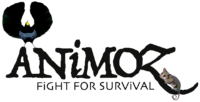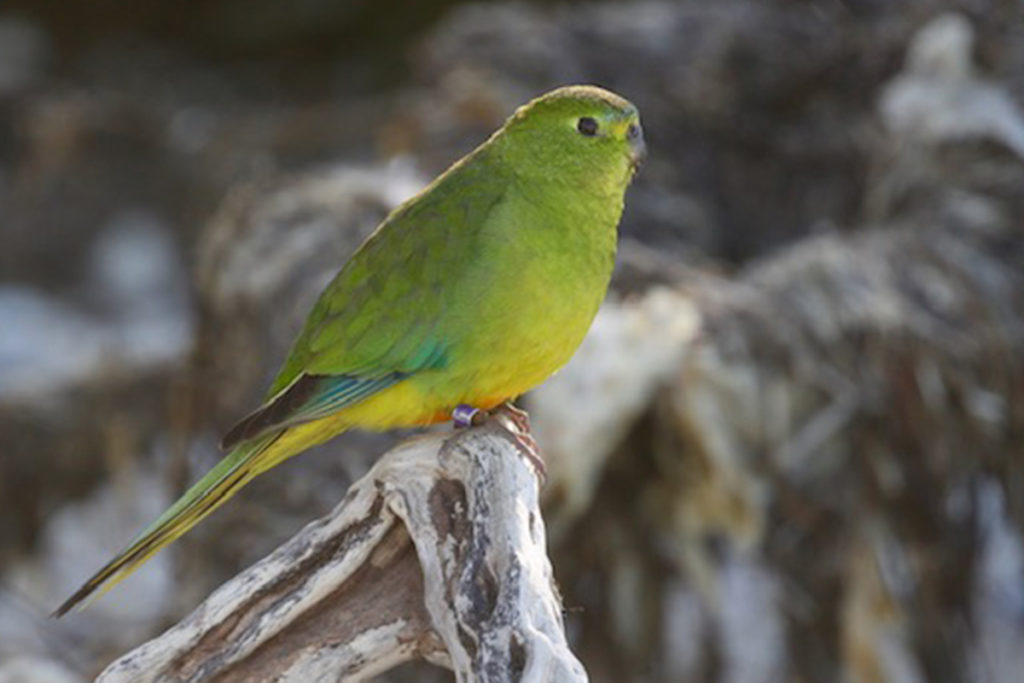ABOUT THE SPECIES
OBPs, as we affectionately call them, are one of Australia’s most beautiful, amazing and endangered birds. OBPs are small ground-feeding parrots. The males are bright green, yellow and blue with a prominent orange belly. The females and juveniles are duller with less orange on their bellies. OBPs breed in one location in the south-western wilderness of Tasmania. They migrate via western Tasmania, the Hunter Island Group and King Island, and winter along the coast from the Coorong in South Australia to Westernport Bay in Victoria.
Each year, OBPs fly at least 640 km across land and sea during migration. The OBP is classified as Critically Endangered on the IUCN’s Red List and under the Commonwealth’s EPBC Act 1999 because of its extremely small wild population, single breeding location and recent rapid decline. There is some uncertainty about the cause of the species’ decline, however, habitat loss and degradation as well as introduced predators and competitors have likely been responsible historically.
Now, OBPs face numerous interacting threats, including the genetic, health and social impacts of a very small wild population. Image courtesy of Steve Davidson, Birdlife Australia.
ABOUT THE ORGANISATION
The OBP Recovery Team is comprised of 30 members representing 23 government and non-government organisations as well as community groups and conservation experts. The role of the OBP Recovery Team is to coordinate recovery activities, provide advice to conservation managers, and review progress of Recovery Plan implementation to maximise the effectiveness of recovery program. As the OBP Recovery Program Coordinator, my (Toby Galligan) role is to facilitate effective collaboration among team members and partner organisations. Partner organisations are involved in conservation activities in three states, including captive breeding and release of captive-bred birds.

